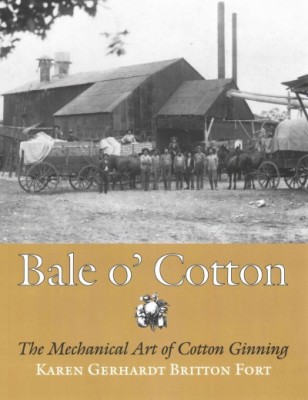| Bale O' Cotton: The Mechanical Art of Cotton Ginning Contributor(s): Fort, Karen Gerhardt Britton (Author) |
|
 |
ISBN: 1623492971 ISBN-13: 9781623492977 Publisher: Texas A&M University Press OUR PRICE: $16.96 Product Type: Paperback - Other Formats Published: February 2015 * Not available - Not in print at this time * |
| Additional Information |
| BISAC Categories: - History | United States - State & Local - Southwest (az, Nm, Ok, Tx) - Technology & Engineering | Agriculture - General - Business & Economics | Industries - Agribusiness |
| Dewey: 677.212 |
| LCCN: 92014229 |
| Series: Centennial Series of the Association of Former Students Texas A & M University (Hardcover) |
| Physical Information: 0.4" H x 8.5" W x 11" (1.00 lbs) 160 pages |
| Descriptions, Reviews, Etc. |
| Publisher Description: Bale o' Cotton: The Mechanical Art of Cotton Ginning offers a unique blend of fact and folklore about cotton ginning, the process that takes cotton from the field, separates fibers from seeds, and packages the lint into a bale for shipment to market. It traces the development of the industry, the equipment, and the techniques of this integral facet of American life from its English beginnings in 1793, through its heyday in the American South, to its present technological peak. Out of the long days spent in the gin plant, a rich oral tradition developed, which included a broad sense of general history and an understanding of worldwide markets, an appreciation for the music of the machine (especially the steam engine), legendary individuals, and a folklore based on practical jokes. But the language, traditions, and cultural practices that developed around the cotton gin are now rapidly becoming extinct as modern technology eliminates the risks, inventiveness, and close working relationships between ginners and machines. To document and preserve the memory of this way of life, Karen Gerhardt Britton has collected material from numerous interviews with ginners, inventors, laborers, and historians. The abundance of illustrations and the availability of never-before-published archival material, thanks to the generous cooperation of the ginning industry, make this a valuable and fascinating resource for historians and lay readers alike. |